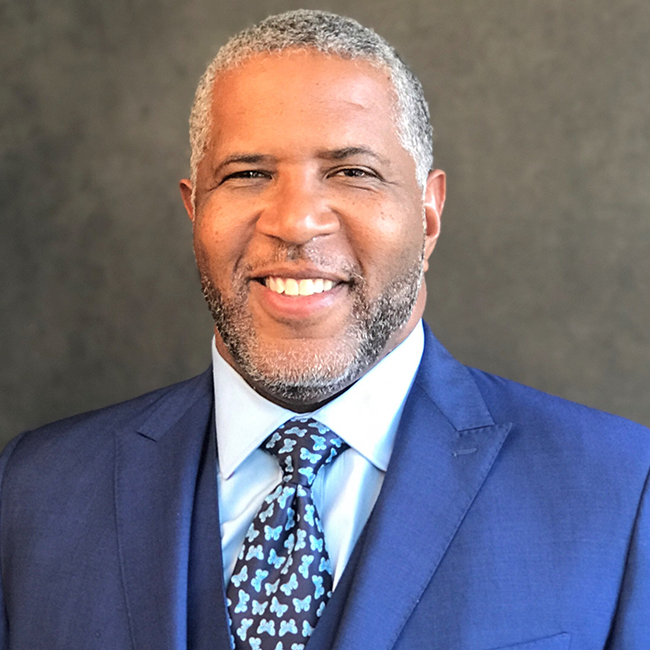
Throughout history, transformative technologies have reshaped economies, industries, and societies. Today, artificial intelligence (AI)—namely generative AI and agentic AI—represents the next great frontier. This technology has the potential to unlock unprecedented opportunity, bridge divides, and fuel prosperity on a global scale.
To realize AI’s full promise, we must take a collaborative approach—working across sectors to ensure its benefits extend beyond a select few. Governments, businesses, and institutions must come together to build the infrastructure, workforce, and policies that will enable AI to drive inclusive growth. If we are intentional, AI can be a force for economic mobility, enhanced productivity, and social progress.
Bridging the Digital and Financial Architecture Divide
While AI is advancing rapidly, access to its benefits is not evenly distributed. There has been a long-standing digital divide that must be closed. In the US, 24 million people lack reliable broadband, let alone the computing power necessary to engage with AI-driven tools. Globally, the gap is even more pronounced: 2.5 billion people are without basic internet access. Closing this divide is a prerequisite for shared prosperity.
Expanding broadband infrastructure, particularly in rural and underrepresented communities, is a critical first step. Without reliable internet access, individuals and businesses are locked out of the AI economy before they even begin.
Equally important is ensuring communities have the financial architecture to take advantage of the AI opportunity. Many underrepresented communities lack basic financial architecture—banks, credit unions, loan funds, and venture capital providers—that is essential for building AI-driven businesses. It is inspiring to see organizations like Southern Communities Initiative and Grameen America partner together to launch the Elevate initiative in cities across the US, providing affordable loans, business education, and peer networking to underinvested entrepreneurs. This initiative exemplifies how leveraging domain expertise and resources can drive scalable impact.
Empowering the Workforce of the Future
AI—and specifically agentic AI—will profoundly transform every workplace, sector, and the broader economy. The challenge is ensuring all workers are equipped to thrive in this new reality. Collaboration between businesses and educational institutions is essential for accelerating workforce development and creating pathways for AI-driven careers. This is why I have long advocated for a national commitment to STEM education and digital literacy. Employers should invest in reskilling programs and actively support universities in integrating generative AI literacy into their curricula.
For example, one of Vista Equity Partners’ (Vista) portfolio companies partnered with several historically Black colleges and universities (HBCUs) across the country to launch an “AI in Basketball” course to prepare its students for careers in technology. Another effort I am proud to support is internXL, a platform that educates and connects over 30,000 students with over 500 AI-centric courses, internships, and professional opportunities. Partnerships like these are vital for preparing students and workers for the future and ensuring that AI becomes a tool for broad-based prosperity.
We must take deliberate and thoughtful steps to ensure AI uplifts all of humanity.
But education must extend beyond formal training programs. AI is evolving so quickly that lifelong learning must become the norm. Organizations must empower workers to adapt and thrive in an AI-enhanced workplace by providing ongoing skill development, mentorship, and access to cutting-edge tools.
Fueling Innovation for Good
AI is already demonstrating its ability to tackle some of society’s most pressing challenges. But, to ensure AI serves humanity’s best interests, it requires thoughtful stewardship. We must prioritize ethical AI development, ensuring transparency, accountability, and fairness in the models we deploy. Ethical AI requires a commitment to diverse datasets, robust testing, and collaboration among technologists, policymakers, and community leaders to ensure language learning models are culturally informed.
AI innovation should be both commercially viable and socially responsible. When we harness AI for the common good, we can create solutions that improve lives while also driving economic growth.
AI’s potential is vast, but it is up to us to chart its trajectory. We must take deliberate and thoughtful steps to ensure it uplifts all of humanity. This requires investment and collaboration across business, government, educational institutions, and philanthropy to fuel growth and innovation.
As leaders, we have a responsibility to shape the future. By working across sectors, we can ensure AI strengthens society, enhances opportunity, and builds a more prosperous future for generations to come.






















